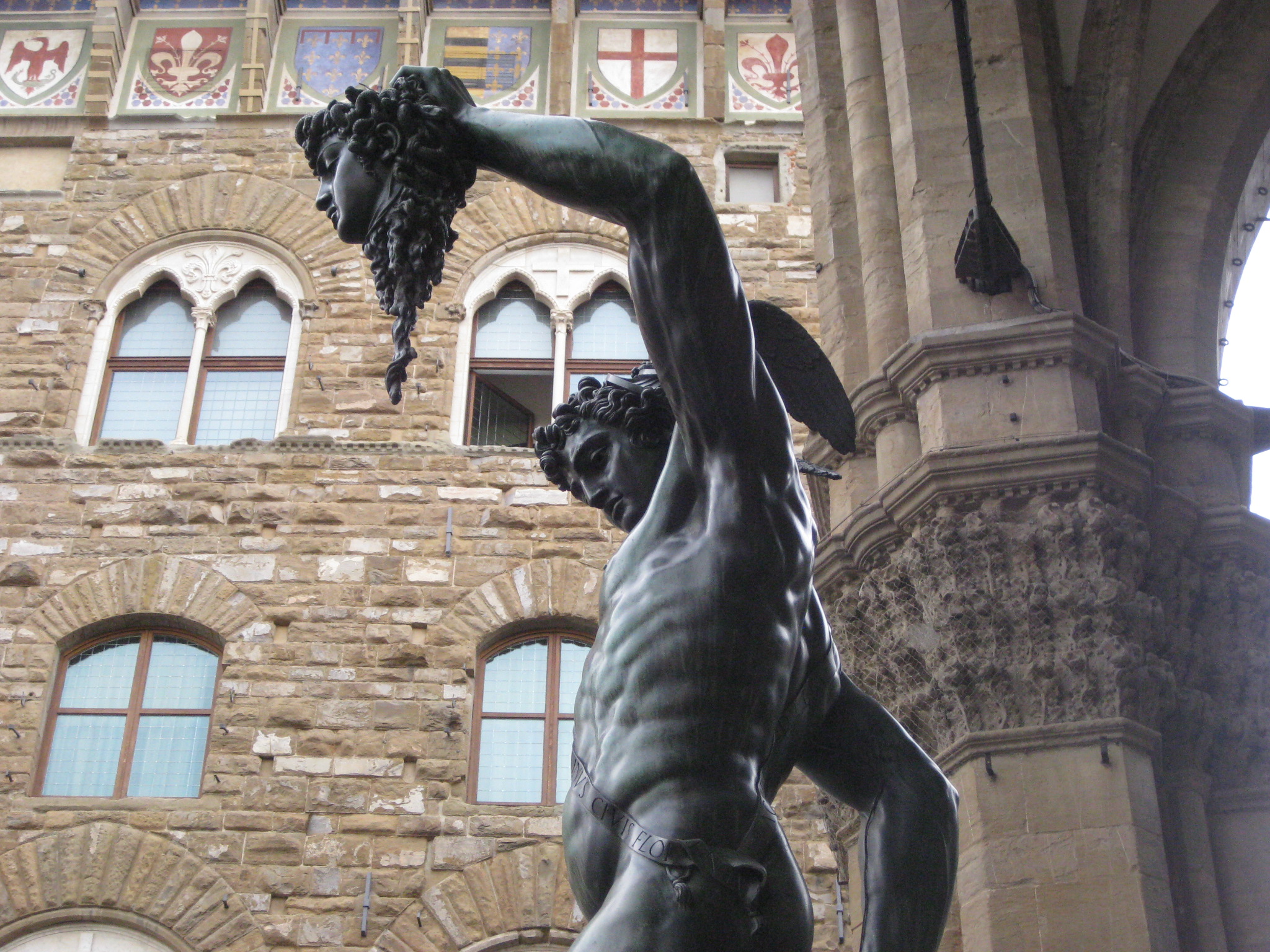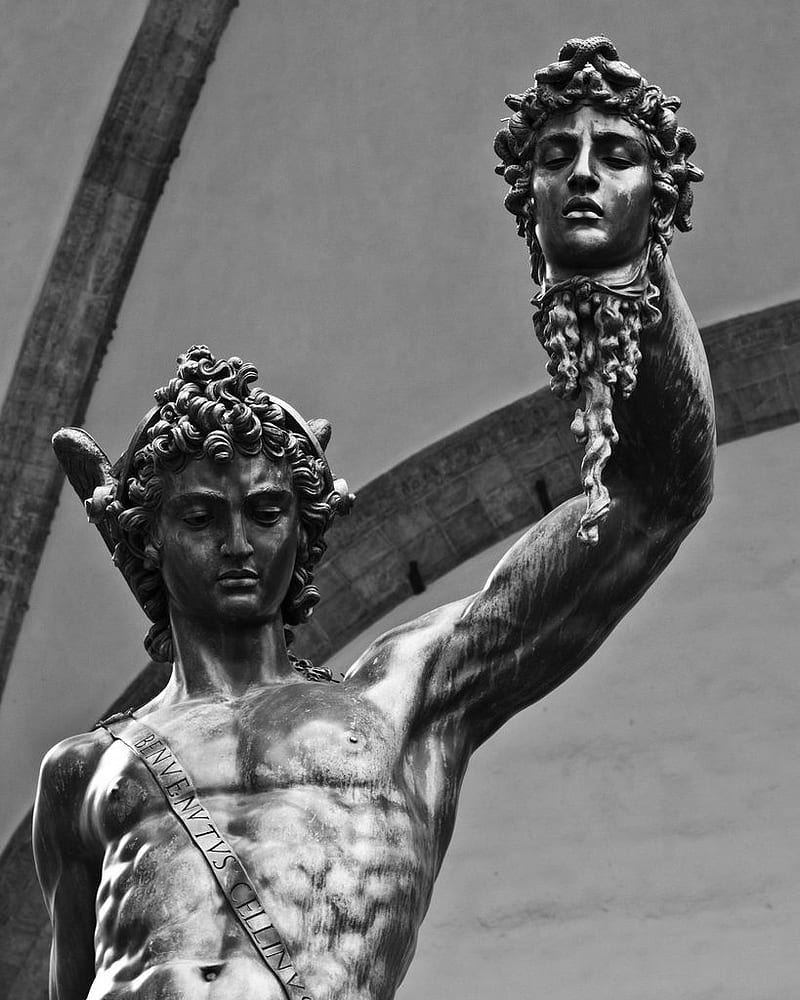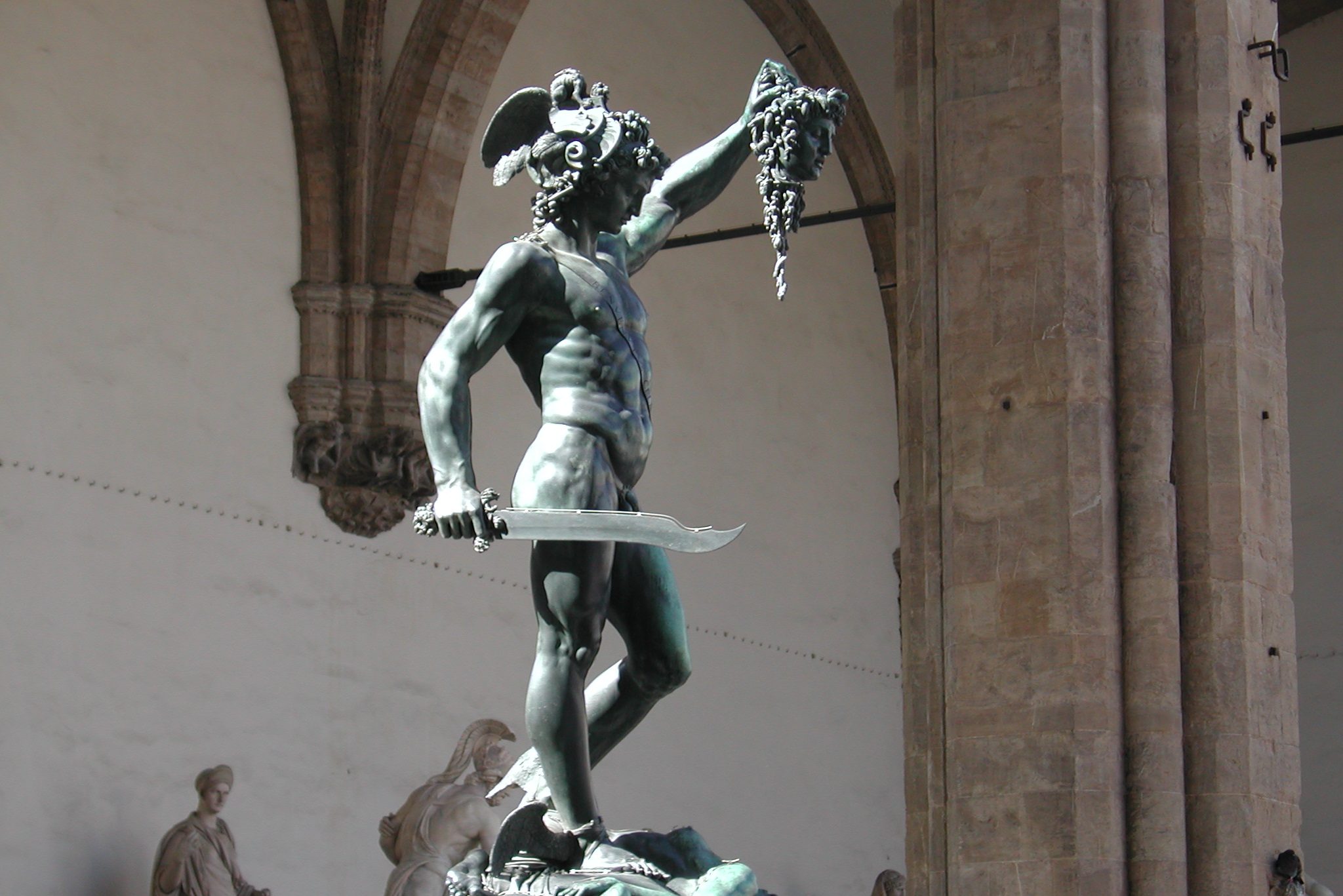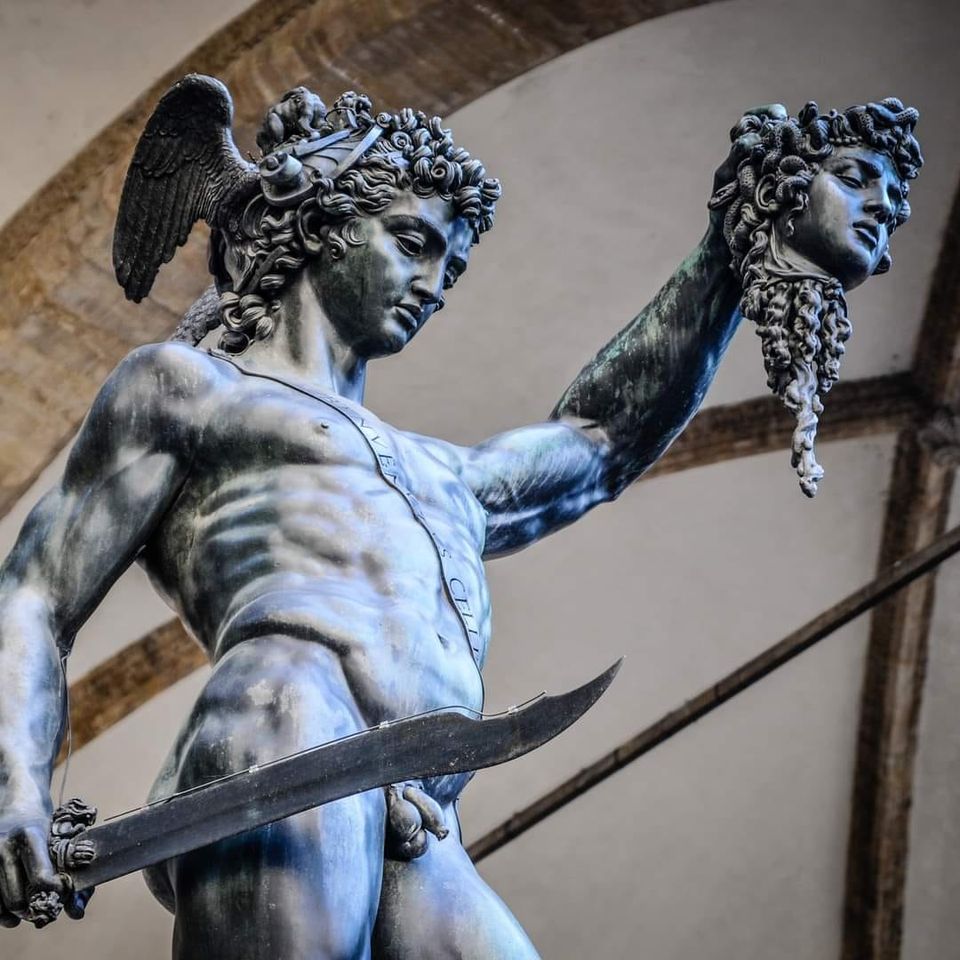Amidst the bustling crowds of Florence’s Piazza della Signoria, a stunning bronze sculpture often goes unnoticed by tourists en route to admire Michelangelo’s David. However, Benvenuto Cellini’s Perseus with the Head of Medusa stands as a true masterpiece, captivating those who pause to appreciate its beauty and the fascinating story it tells. This remarkable work of art, steeped in history and myth, has mesmerized art enthusiasts for centuries with its dynamic portrayal and profound symbolism.
The Sculptor and His Masterpiece
Benvenuto Cellini, the brilliant 16th-century Florentine artist, crafted this striking sculpture with unparalleled skill. A true Renaissance polymath, Cellini was celebrated for his exceptional metalworking talents as well as his flamboyant personality and tumultuous life. His autobiography, rich with tales of his adventures and misadventures, offers a captivating insight into the vibrant world that inspired this extraordinary masterpiece.

The meaning of the symbol
The placement of Perseus facing David is intentional, a deliberate choice by Cellini that highlights the intricate symbolism of his work. The Perseus sculpture embodies the strength of the Medici family, Florence’s ruling dynasty, who commissioned it to signify their political and military prowess. The severed head of Medusa, symbolizing evil and chaos, metaphorically represents the Medici’s victory over their adversaries.

The Trials and Successes of the Creative Journey
Crafting this masterpiece was a formidable endeavor. Cellini confronted numerous technical and artistic challenges, ranging from mastering intricate metalworking techniques to navigating the political intricacies necessary to secure the commission. His autobiography reveals the artist’s meticulous attention to detail and relentless determination to realize his vision, regardless of the obstacles he faced.
The Enduring Legacy of the Perseus

Perspective through video
